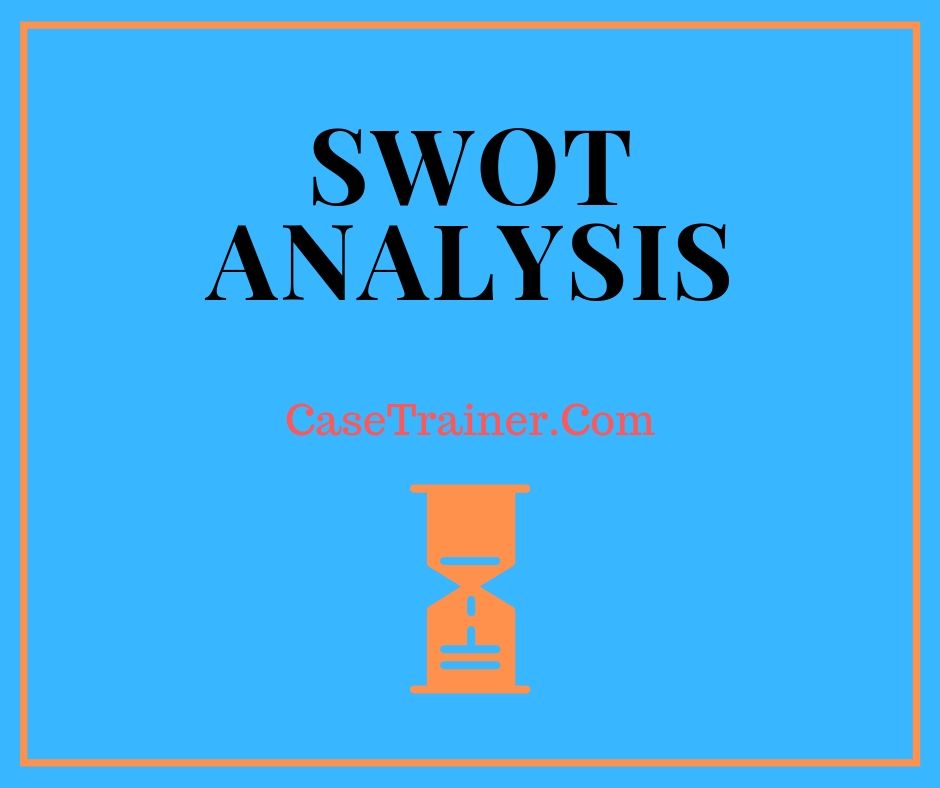Itc In Rural India Case Study Solution and Analysis
Intro
Itc In Rural India is presently one of the most significant food chains worldwide. It was founded by Henri Itc In Rural India in 1866, a German Pharmacist who initially released "Farine Lactee"; a mix of flour and milk to reduce and feed infants mortality rate.
Itc In Rural India is now a multinational company. Unlike other multinational companies, it has senior executives from different nations and tries to make decisions thinking about the entire world. Itc In Rural India Case Study Solution presently has more than 500 factories around the world and a network spread throughout 86 countries.
Purpose
The function of Itc In Rural India Corporation is to improve the quality of life of people by playing its part and providing healthy food. It wants to help the world in forming a healthy and better future for it. It likewise wants to motivate people to live a healthy life. While ensuring that the company is being successful in the long run, that's how it plays its part for a better and healthy future
Vision
Nestlé's vision is to offer its consumers with food that is healthy, high in quality and safe to consume. It wants to be innovative and concurrently understand the requirements and requirements of its consumers. Its vision is to grow fast and provide products that would satisfy the needs of each age group. Itc In Rural India envisions to establish a well-trained labor force which would help the company to grow.
Mission.
Nestlé's objective is that as presently, it is the leading company in the food market, it thinks in 'Great Food, Great Life". Its objective is to provide its customers with a variety of choices that are healthy and finest in taste. It is focused on supplying the very best food to its customers throughout the day and night.
Products.

Itc In Rural India has a wide variety of items that it provides to its clients. In 2011, Itc In Rural India was noted as the most rewarding company.
Goals and goals.
• Remembering the vision and mission of the corporation, the company has put down its objectives and objectives. These objectives and objectives are listed below.
• One objective of the business is to reach no landfill status.
• Another goal of Itc In Rural India is to squander minimum food during production. Most often, the food produced is lost even before it reaches the clients.
• Another thing that Itc In Rural India is working on is to improve its product packaging in such a method that it would help it to minimize those complications and would also guarantee the delivery of high quality of its products to its consumers.
• Meet worldwide standards of the environment.
• Build a relationship based upon trust with its customers, company partners, employees, and federal government.
Critical Problems.
Recently, Itc In Rural India Case Study Help Company is focusing more towards the technique of NHW and investing more of its profits on the R&D technology. The nation is investing more on mergers and acquisitions to support its NHW technique. The target of the business is not accomplished as the sales were expected to grow higher at the rate of 10% per year and the operating margins to increase by 20%, offered in Exhibit H.
Situational Analysis.

Analysis of Present Technique, Vision and Goals.
The present Itc In Rural India strategy is based on the principle of Nutritious, Health and Health (NHW). This strategy deals with the idea to bringing modification in the customer preferences about food and making the food stuff healthier worrying about the health problems.
The vision of this method is based upon the secret approach i.e. 60/40+ which merely means that the items will have a rating of 60% on the basis of taste and 40% is based on its dietary value. The items will be produced with additional dietary value in contrast to all other items in market acquiring it a plus on its nutritional material.
This strategy was embraced to bring more tasty plus healthy foods and drinks in market than ever. In competition with other business, with an objective of retaining its trust over customers as Itc In Rural India Business has actually gotten more relied on by customers.
Microenvironment Analysis (PESTEL Analysis).
The analysis utilized to determine the position of business in the market is done by using PESTLE analysis, offered in Display A. Itc In Rural India works under the guidelines and policies directed by government and food authority. The business is more focused on its items and services to make sure about the item quality and security.
Political.

Itc In Rural India is considerably supported by Federal government to fulfill all the requirements of standards like acts of health and safety. In efforts to make great food, Itc In Rural India Case Study Help is altering the requirements of food and drink production.
Economic.
Initiation of the business where the capital income of each individual matters for the increased net sale as this differs country-to-country. The economy of the Itc In Rural India Company in U.S. is growing year by year with variable products launch especially concentrating on the nutritional food for infants.
Social.
The social environment continues altering with respect to time like the attitude of the consumer along with their way of lives. Any product and services of any business can not succeed up until the business is not worried about the living system of the customer. Itc In Rural India is taking procedures to meet its objectives as the world is in search of healthy and yummy food.
Technological.
In the development of service, tactical measures are somewhat mandatory. Itc In Rural India is among the leading well-known multinational firm and by time it purchases various departments to take its products to new level. Itc In Rural India is investing more on its R&D to make its products healthier and healthy supplying customers with health benefits.
Legal.
There is no such effect of legal elements of Itc In Rural India as it is more worried over its policies and laws.
Environmental
Itc In Rural India, in regards to ecological impact is committed to operate in environment-friendly environment with preservation of the natural resources and energy. As due to the production of larger number of items there may be a threat if the resources used are recyclable or not.
Competitive Forces Analysis (Porter's 5 Forces Model).
Itc In Rural India Case Study Help has obtained a number of business that helped it in diversification and growth of its item's profile. This is the thorough explanation of the Porter's design of 5 forces of Itc In Rural India Business, given in Exhibit B.
Competitiveness.
Itc In Rural India is one of the leading business in this competitive market with a number of strong competitors like Unilever, Kraft foods and Group DANONE. Itc In Rural India is running well in this race for last 150 years. The competition of other companies with Itc In Rural India is quite high.

Danger of New Entrants.
A number of barriers are there for the brand-new entrants to occur in the customer food industry. Only a few entrants be successful in this industry as there is a requirement to understand the consumer need which requires time while recent rivals are well aware and has advanced with the customer commitment over their products with time. There is low threat of brand-new entrants to Itc In Rural India as it has quite large network of circulation worldwide dominating with well-reputed image.
Bargaining Power of Providers.
In the food and beverage industry, Itc In Rural India Case Study Solution owes the biggest share of market requiring higher number of supply chains. In response, Itc In Rural India has also been worried for its providers as it thinks in long-lasting relations.
Bargaining Power of Purchasers.
There is high bargaining power of the buyers due to terrific competition. Switching expense is quite low for the customers as many business sale a number of similar items. This seems to be a great threat for any business. Therefore, Itc In Rural India Case Study Analysis makes certain to keep its customers satisfied. This has led Itc In Rural India to be among the loyal business in eyes of its purchasers.
Threat of Alternatives.
There has been a great risk of replacements as there are replacements of some of the Nestlé's products such as boiled water and pasteurized milk. There has also been a claim that some of its products are not safe to utilize leading to the decreased sale. Thus, Itc In Rural India began highlighting the health advantages of its items to cope up with the replacements.
Competitor Analysis.
Itc In Rural India Case Study Solution covers a lot of the popular customer brands like Package Kat and Nescafe etc. About 29 brand names among all of its brand names, each brand name earned an earnings of about $1billion in 2010. Its huge part of sale is in North America making up about 42% of its all sales. In Europe and U.S. the leading major brands sold by Itc In Rural India in these states have an excellent respectable share of market. Itc In Rural India, Unilever and DANONE are two large industries of food and beverages as well as its primary competitors. In the year 2010, Itc In Rural India had actually earned its annual profit by 26% increase because of its increased food and drinks sale particularly in cooking things, ice-cream, beverages based upon tea, and frozen food. On the other hand, DANONE, due to the increasing rates of shares resulting an increase of 38% in its earnings. Itc In Rural India Case Study Solution lowered its sales expense by the adjustment of a brand-new accounting procedure. Unilever has number of staff members about 230,000 and functions in more than 160 nations and its London headquarter. It has become the second largest food and drink market in the West Europe with a market share of about 8.6% with just a distinction of 0.3 points with Itc In Rural India. Unilever shares a market share of about 7.7 with Itc In Rural India ending up being very first and ranking DANONE as third. Itc In Rural India attracts regional customers by its low expense of the item with the local taste of the products keeping its first place in the international market. Itc In Rural India business has about 280,000 workers and functions in more than 197 nations edging its rivals in lots of regions. Itc In Rural India has actually also reduced its cost of supply by introducing E-marketing in contrast to its competitors.
Note: A brief comparison of Itc In Rural India with its close competitors is given in Exhibit C.
SWOT Analysis.
The internal analysis and external of the company likewise can be done through SWOT Analysis, summed up in the Display F.
Strengths.
• Itc In Rural India has an experience of about 140 years, making it possible for company to better perform, in different situations.
• Nestlé's has existence in about 86 nations, making it a worldwide leader in Food and Drink Industry.
• Itc In Rural India has more than 2000 brands, which increase the circle of its target customers. These brands consist of infant foods, animal food, confectionary items, beverages etc. Famous brands of Itc In Rural India include; Maggi, Kit-Kat, Nescafe, etc.
• Itc In Rural India Case Study Help has big amount of spending on R&D as compare to its competitors, making the business to introduce more innovative and nutritious items. This innovation offers the business a high competitive position in long term.
• After adopting its NHW Strategy, the company has actually done big quantity of mergers and acquisitions which increase the sales development and improve market position of Itc In Rural India.
• Itc In Rural India is a popular brand with high customer's loyalty and brand name recall. This brand commitment of consumers increases the possibilities of easy market adoption of different new brands of Itc In Rural India.
Weaknesses.
• Acquisitions of those service, like; Kraft frozen Pizza organisation can give an unfavorable signal to Itc In Rural India customers about their compromise over their core competency of healthier foods.
• The development I sales as compare to the business's financial investment in NHW Strategy are rather various. It will take long to change the understanding of people ab out Itc In Rural India as a company offering nutritious and healthy items.
Opportunities.
• Introducing more health associated items makes it possible for the business to catch the market in which customers are rather mindful about health.
• Developing countries like India and China has biggest markets worldwide. Expanding the market towards establishing nations can boost the Itc In Rural India service by increasing sales volume.
• Continue acquisitions and joint ventures increases the marketplace share of the company.
• Increased relationships with schools, hotel chains, dining establishments and so on can likewise increase the number of Itc In Rural India Case Study Analysis consumers. For example, instructors can suggest their students to purchase Itc In Rural India items.
Hazards.
• Economic instability in countries, which are the prospective markets for Itc In Rural India, can develop several problems for Itc In Rural India.
• Shifting of items from normal to healthier, leads to extra costs and can result in decrease business's profit margins.
• As Itc In Rural India has an intricate supply chain, therefore failure of any of the level of supply chain can lead the company to deal with certain problems.
Division Analysis
Group Segmentation
The demographic segmentation of Itc In Rural India Case Study Analysis is based on 4 elements; age, gender, occupation and earnings. Itc In Rural India produces several items related to children i.e. Cerelac, Nido, etc. and associated to grownups i.e. confectionary products. Itc In Rural India products are rather affordable by nearly all levels, but its major targeted clients, in regards to earnings level are middle and upper middle level customers.
Geographical Segmentation
Geographical segmentation of Itc In Rural India Case Study Solution is made up of its presence in practically 86 countries. Its geographical division is based upon 2 primary aspects i.e. typical income level of the consumer as well as the environment of the region. For instance, Singapore Itc In Rural India Company's division is done on the basis of the weather condition of the region i.e. hot, warm or cold.
Psychographic Division
Psychographic segmentation of Itc In Rural India is based upon the character and life style of the customer. Itc In Rural India 3 in 1 Coffee target those clients whose life style is quite hectic and don't have much time.
Behavioral Segmentation
Itc In Rural India Case Solution behavioral division is based upon the attitude understanding and awareness of the consumer. For example its extremely healthy items target those consumers who have a health conscious mindset towards their consumptions.
VRIO Analysis
The VRIO analysis of Itc In Rural India Business is a broad variety analysis supplying the organization with a possibility to get a practical competitive benefit versus its competitors in the food and beverage market, summarized in Exhibition I.
Prized Possession
The resources utilized by the Itc In Rural India business are valuable for the business or not. Such as the resources like finance, personnels, management of operations and experts in marketing. This are a few of the crucial valuable aspects of for the recognition of competitive benefit.
Unusual
The valuable resources utilized by Itc In Rural India are even uncommon or pricey. If these resources are frequently found that it would be simpler for the rivals and the new rivals in the market to easily move in competition.
Imitation
The replica procedure is costly for the rivals of Itc In Rural India Case Analysis Company. It can be done just in 2 various methods i.e. item duplication which is produced and made by Itc In Rural India Business and introducing of the replacement of the products with switching expense. This increases the risk of disruption to the recent structure of the industry.
Organization
This element of VRIO analysis deals with the compatibility of the business to place in the market making productive use of its valuable resources which are challenging to mimic. Often, the development of management is absolutely depending on the company's execution technique and team. Hence, this polishes the abilities of the firm by time based on the decisions made by company for the progression of its strategic capitals.
Quantitative Analysis
R&D Spending as a percentage of sales are decreasing with increasing real quantity of spending reveals that the sales are increasing at a greater rate than its R&D costs, and permit the business to more invest in R&D.
Net Earnings Margin is increasing while R&D as a portion of sales is decreasing. This sign also shows a thumbs-up to the R&D spending, acquisitions and mergers.
Financial obligation ratio of the business is increasing due to its spending on mergers, acquisitions and R&D development rather than payment of debts. This increasing financial obligation ratio present a risk of default of Itc In Rural India to its financiers and might lead a decreasing share rates. Therefore, in regards to increasing financial obligation ratio, the company should not spend much on R&D and should pay its present financial obligations to decrease the risk for financiers.
The increasing threat of investors with increasing debt ratio and declining share costs can be observed by huge decline of EPS of Itc In Rural India Case Help stocks.
The sales development of business is also low as compare to its mergers and acquisitions due to slow perception structure of customers. This slow growth likewise hinder company to further spend on its acquisitions and mergers.( Itc In Rural India, Itc In Rural India Financial Reports, 2006-2010).
Keep in mind: All the above analysis is done on the basis of charts and estimations given up the Exhibits D and E.
TWOS Analysis.
2 analysis can be utilized to obtain numerous methods based on the SWOT Analysis provided above. A short summary of TWOS Analysis is given up Exhibition H.
Techniques to make use of Opportunities utilizing Strengths.
Itc In Rural India Case Solution should present more innovative products by large quantity of R&D Spending and acquisitions and mergers. It could increase the market share of Itc In Rural India and increase the profit margins for the business. It might likewise provide Itc In Rural India a long term competitive benefit over its competitors.
The global growth of Itc In Rural India ought to be focused on market capturing of establishing nations by growth, attracting more clients through client's commitment. As establishing countries are more populated than industrialized countries, it could increase the customer circle of Itc In Rural India.
Strategies to Conquer Weaknesses to Exploit Opportunities.
Itc In Rural India Case Solution ought to do mindful acquisition and merger of companies, as it could affect the client's and society's perceptions about Itc In Rural India. It should acquire and merge with those companies which have a market credibility of nutritious and healthy business. It would enhance the perceptions of consumers about Itc In Rural India.
Itc In Rural India should not just invest its R&D on development, instead of it ought to likewise focus on the R&D costs over assessment of expense of various healthy products. This would increase cost efficiency of its products, which will result in increasing its sales, due to declining prices, and margins.
Strategies to utilize strengths to conquer threats.
Itc In Rural India needs to move to not only developing but likewise to industrialized countries. It needs to expand its circle to different countries like Unilever which runs in about 170 plus nations.
Methods to overcome weaknesses to prevent hazards.
Itc In Rural India needs to wisely manage its acquisitions to avoid the risk of misconception from the customers about Itc In Rural India. It ought to combine and get with those nations having a goodwill of being a healthy company in the market. This would not just improve the perception of consumers about Itc In Rural India but would also increase the sales, earnings margins and market share of Itc In Rural India. It would likewise allow the business to use its potential resources effectively on its other operations rather than acquisitions of those organizations slowing the NHW method development.
Alternatives.
In order to sustain the brand name in the market and keep the customer intact with the brand name, there are two choices:.
Alternative: 1.
The Company must spend more on acquisitions than on the R&D.
Pros:.
1. Acquisitions would increase overall properties of the business, increasing the wealth of the company. Spending on R&D would be sunk cost.
2. The business can resell the acquired systems in the market, if it fails to execute its method. Amount spend on the R&D could not be revived, and it will be thought about completely sunk expense, if it do not give possible results.
3. Investing in R&D supply sluggish growth in sales, as it takes long time to introduce an item. However, acquisitions supply fast outcomes, as it supply the company currently developed item, which can be marketed soon after the acquisition.
Cons:.
1. Acquisition of company's which do not fit with the company's worths like Kraftz foods can lead the company to face mistaken belief of consumers about Itc In Rural India core worths of nutritious and healthy products.
2. Big spending on acquisitions than R&D would send a signal of company's inefficiency of developing ingenious items, and would results in customer's dissatisfaction as well.
3. Big acquisitions than R&D would extend the line of product of the company by the products which are currently present in the market, making business unable to present new innovative items.
Option: 2
The Company should spend more on its R&D instead of acquisitions.
Pros:
1. It would allow the company to produce more innovative products.
2. It would supply the company a strong competitive position in the market.
3. It would allow the company to increase its targeted consumers by introducing those products which can be used to a completely brand-new market section.
4. Ingenious products will supply long term advantages and high market share in long run.
Cons:
1. It would decrease the revenue margins of the company.
2. In case of failure, the entire costs on R&D would be thought about as sunk expense, and would affect the company at big. The danger is not in the case of acquisitions.
3. It would not increase the wealth of company, which might provide an unfavorable signal to the financiers, and could result I decreasing stock rates.
Alternative 3:
Continue its acquisitions and mergers with significant costs on in R&D Program.
Pros:
1. It would enable the business to introduce new innovative products with less risk of transforming the spending on R&D into sunk cost.
2. It would provide a favorable signal to the financiers, as the overall assets of the company would increase with its substantial R&D costs.
3. It would not impact the profit margins of the business at a big rate as compare to alternative 2.
4. It would offer the business a strong long term market position in regards to the company's total wealth in addition to in terms of innovative products.
Cons:
1. Threat of conversion of R&D spending into sunk cost, higher than option 1 lower than alternative 2.
2. Risk of mistaken belief about the acquisitions, higher than alternative 2 and lower than option 1.
3. Intro of less number of ingenious products than alternative 2 and high number of innovative products than alternative 1.
Recommendation
With the deep analysis of the above options, it is advised that the company ought to choose the alternative 3 in order to keep a competitive position in the long run. As the alternative 3 would enable the business to not only present brand-new and innovative products in the market it would likewise minimize the high expenses on R&D under alternative 2 and increase the earnings margins. It would make it possible for the business to increase its share costs also, as investors are willing to invest more in companies with significant R&D spending and boost in the overall worth of the company.
Action and execution Strategy
Method can be executed successfully by developing certain short term along with long term strategies. These plans might be as follows;
Short-term Strategy (0-1 year).
• Under the short term plan Itc In Rural India Case Help ought to perform different activities to execute its NHW strategy effectively. These activities are as follows;.
• Get the audit of its brand name portfolio done, to take a look at the core selling brands, which create most of its revenue.
• Examine the existing target market as well as the marketplace segment which is not consist of in the company's circle.
• Examine the current financial data to determine the quantity that ought to be spent on the R&D and acquisitions.
• Examine the prospective investors and their nature, i.e. do they want long term advantages (capital gain), or the desire early revenues (dividend). It would let the company to understand that just how much quantity must be invested in R&D.
Mid Term Strategy (1-5 years).
• Get those companies in which the company has potential experience to deal with. Obtain most beneficial companies with a strong dedication to health, to construct the customer's understandings in the ideal direction.
• Focus more on acquisitions than R&D to build the base in the customer's mind about Itc In Rural India worths and vision and to prevent potential danger of sunk expense.
Long Term Strategy (1-10 years).
• Get companies with health in addition to taste factor, as the base for the Itc In Rural India as a company producing healthy products has actually been developed under midterm plan and now the business could move towards taste factor also to comprehend the consumers, which focus more on taste instead of health.
• Be more aggressive towards R&D than the acquisitions, as it is the substantial time to construct brand-new products.
Conclusion.

Itc In Rural India Case Help has actually established significant market share and brand name identity in the urban markets, it is suggested that the company needs to focus on the rural areas in terms of developing brand awareness, loyalty, and equity, such can be done by producing a specific brand name allotment strategy through trade marketing strategies, that draw clear distinction in between Itc In Rural India products and other rival items. This will enable the company to establish brand equity for newly presented and currently produced products on a higher platform, making the reliable use of resources and brand image in the market.

